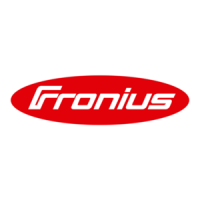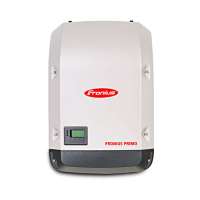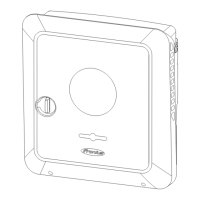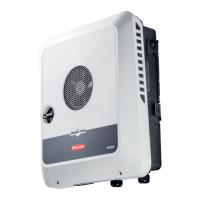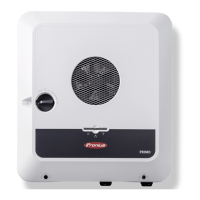16
Notes on connection area
Permitted cables Cables with the following design can be connected to the AC and DC terminals of the in-
verter:
Connecting Alu-
minum Cables
The terminals are designed for connecting single-wire, round aluminum cables. The follow-
ing points must be taken into account when connecting aluminum cables due to the non-
conducting oxide layer of aluminum:
- reduced rated currents for aluminum cables
- the connection requirements listed below.
Connection Requirements:
Carefully clean off the oxide layer of the stripped end of the cable, e.g., using a knife.
IMPORTANT! Do not use brushes, files, or sandpaper; aluminum particles may get stuck
and can transfer to other cables.
- Copper or aluminum: round, solid
- Copper: round, stranded, up to conductor class 4
Fronius Primo 3.8–8.2 Fronius Primo 10.0–15.0
Cable cross-sections: Cable cross-sections:
Cu: min. AWG 14 – max. AWG 6
Al: AWG 6
Cu : min. AWG 14 - max. AWG 2
Al : AWG 6
DC =
Cu: min. AWG 14 - max. AWG 6
Al : AWG 6
Cu / Al: min. AWG 4 - max. AWG 2 (with
optional input combiner)
AC ~
Cu: min. AWG 10 - max. AWG 2;
AWG 6 - AWG 2 (for solid / stranded / fine
stranded cables)
Multi-contact: AWG12
Terminal tightening torque: Terminal tightening torque:
16 lbf.in / 1.33 t. lb. / 1.8 Nm AC ~
31 lbf.in / 2.58 ft. lb. / 3.5 Nm
DC =
16 lbf.in / 1.33 ft. lb. / 1.8 Nm
Cu / Al Cu
NOTE! Take into account local specifications when configuring cable cross sec-
tions.
1
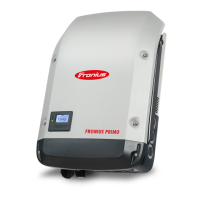
